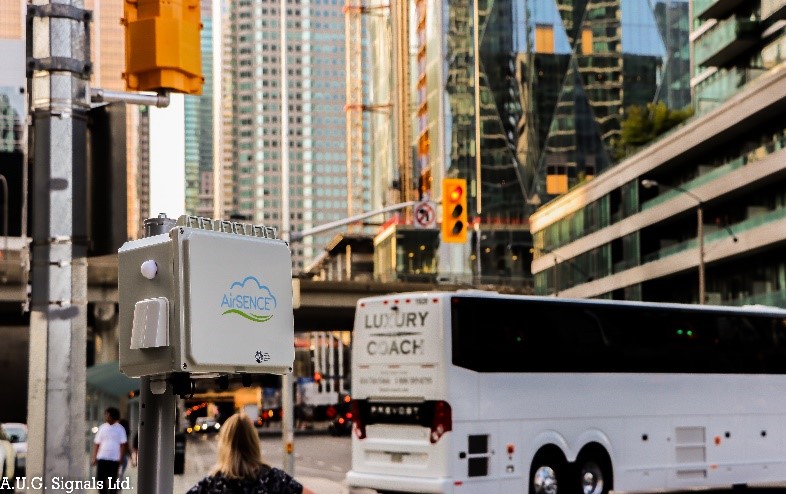Why should we care about air pollution?
Air pollution continues to be a serious problem in major cities around the world, with incessant traffic and industrial emissions creating pollutant concentrations that often exceed WHO guidelines. A comprehensive 2020 study by State of Global Air[1] concluded that air pollution is responsible for a shocking 6.67 million annual deaths worldwide, making it the fourth leading cause of death behind high blood pressure, smoking, and poor diet. This is up from fifth in the previous year, mainly because the report included health effects on infants less than one month old for the first time. Nearly half a million infants in this age group were found to have died due to poor air quality, two-thirds of which were attributable to indoor pollutants from burning charcoal, wood and animal dung for cooking. Maternal exposure to air pollution contributes to low birth weight and premature birth, both of which can introduce medical issues such as frail lungs. India was the hardest-hit country with 116,000 newborn deaths linked to air pollution, while the same figure for sub-Saharan Africa was 236,000.
https://www.stateofglobalair.org/
Most human exposure to poor air quality occurs in cities, which is only partly due to the greater vehicular and industrial activity present in urban areas. The other major contributing factor is the sheer population density of cities: currently, more than 55% of the world’s population live in cities, a figure which is expected to increase to 68% by 2050 according to a UN estimate[1]. When one considers that urban areas take up only 3% of the earth’s terrestrial area (as per a 2005 study[2]), the increased vulnerability of city dwellers to the effects of air pollution becomes readily apparent. Increasing global awareness and efforts have come about in recent years to make cities smarter, more responsive, and more livable, and a critical component of such solutions is continuous urban air quality monitoring.
[1] https://www.un.org/development/desa/en/news/population/2018-revision-of-world-urbanization-prospects.html
[2] https://www.livescience.com/6893-cities-cover-earth-realized.html
Common Air Pollutants in Urban Cities
Particulate matter (PM10, PM2.5)
Particles in the air are categorized according to their respective diameters; particles with diameter smaller than 10 µm are classified as PM10, while those less than 2.5 µm are known as PM2.5. When inhaled, PM particles can penetrate deep into lungs. Smaller particles are able to penetrate further and may even enter the bloodstream, therefore the health risks associated with airborne particles increase as particle size decreases. Particulates are considered to be the most hazardous and problematic of all common air pollutants, and for this reason the concentrations of PM10 and PM2.5 are benchmarks typically used to indicate overall urban air quality. PM is associated with major health effects like respiratory diseases, cardiovascular dysfunction, strokes and lung cancer, and can also exacerbate and promote transmission of respiratory infections such as COVID-19.
Nitrogen oxides (NOX)
NOX compounds (which include nitric oxide, NO, and nitrogen dioxide, NO2) are formed whenever combustion occurs in the presence of nitrogen. Transportation is the major contributor of these compounds in urban areas, particularly from vehicles that burn diesel fuel as it favours a fuel-lean (i.e., air-rich) mixture. Most additional NOX in cities originates from stationary combustion sources, such as power stations and domestic heating, although some is produced naturally by lightning. In areas of high motor vehicle traffic, such as in large cities and near major roadways, the amount of NOX emitted can be significant and produce a characteristic brownish colour in the overlying atmosphere. NO2 is an irritant gas, which at high concentrations causes inflammation of the airways. In addition, NOₓ is a key contributor to the formation of ground level ozone.
[1] https://www.livescience.com/6893-cities-cover-earth-realized.html
Ozone (O₃)
Ozone in the stratosphere absorbs harmful UV radiation and is crucial to life on earth. At ground level, on the other hand, it is a serious threat to human health and wildlife. Ozone is not directly produced or emitted to the atmosphere, but it is generated through chemical reaction of NOX and volatile organic compounds in the presence of UV radiation from sunlight. In other words, pollutants emitted by cars, power plants and burning of materials interact with sunlight to create ozone. Ozone is a primary component of urban smog which is very harmful to the lungs and is especially hazardous to sensitive individuals, e.g., asthmatics.
Carbon monoxide (CO)
Carbon monoxide is colorless, odorless, and tasteless, but is a highly toxic air pollutant. CO is produced due to incomplete combustion of fossil fuels such as gasoline, natural gas, oil, coal, and wood. The largest anthropogenic sources of CO are emissions from vehicles and agricultural fires.
Sulphur oxides (SOX)
Sulphur oxides include both sulphur dioxide (SO2) and sulphur trioxide (SO3), but in ambient air it is nearly entirely comprised of SO2. Both SO2 and SO3 are colorless, toxic gases which have a strongly characteristic taste and smell. The main source of these pollutants is the burning of sulphur-rich fossil fuels, especially low-grade coals such as lignite. Thermal plants utilizing such coals are known to be the main sources of anthropogenic SO2 emissions worldwide, particularly in developing nations that do not strictly enforce flue gas desulphurization. Emissions from domestic coal burning and from vehicles can also contribute to high local ambient concentrations of SO2. SOX readily combines with atmospheric moisture to produce sulfuric acid, which causes immense damage to the environment and human infrastructure in the form of acid rain.
Volatile Organic Compounds (VOCs)
VOCs are organic compounds with low boiling point that readily evaporate at ambient temperatures. Several of these compounds are known to be carcinogenic and many others are suspected carcinogens; all are considered harmful to human health. Sources of VOCs include paints, varnishes, waxes, oil-dissolving solvents, cleansers, fuels, disinfectants, cosmetics, and glues. They are also known to be produced from tobacco smoking and burning of fuel. VOCs additionally contribute to the formation of ground level ozone.
What are the sources and impacts of air pollutants in urban areas?
Vehicular Pollution
The majority of vehicles around the world still use fossil fuels and contribute significantly to urban air pollution, especially those that run on diesel. The US Environmental Protection Agency estimated in a 2017 National Emissions Inventory Report[1] that mobile sources contributed roughly 4% of PM2.5, 41% of black carbon (a particularly hazardous component of particulates), 7% of VOCs, and more than half of the total NOX emissions.
Domestic use of fossil fuels
Solid fuels including wood, charcoal, and coal are still burned in inefficient stoves by half of the global population for cooking and heating. This releases large quantities of health-damaging PMs, CO, and NOX into the urban environment.
Industrialization
Heavy industries located within cities are major contributors to the urban air pollution. Industries in the developed world are required to use pollutant mitigation techniques and methodically catalog their fugitive emissions, although violations of these laws can and do occur regularly. Such regulations may be inadequate or insufficiently enforced in developing nations, and—in some cases—do not exist at all. As a result, many releases of toxic gases from irresponsible use of chemicals in manufacturing processes or burning of fossil fuels may go undocumented. These gases are pollutants by themselves, but they may also undergo reactions with other atmospheric constituents to produce secondary air pollutants which are of even greater concern.
Perpetually increasing power demand
As urban populations surge, so do the energy demands of cities. To fulfill this perpetually growing need, thermal power plants are commonly used due to their short-term cost effectiveness and relative ease of installation. These plants, however, are notorious sources of several major air pollutants including PMs, NOX, SOX, VOCs, and heavy metals such as mercury and lead.
Combustion and agriculture
Cities situated near farmlands may experience periods of severely compromised air quality due to the burning of agricultural stubbles. CO and PM released during the routine combustion of plant matter become serious health concerns for several regions of India such as Delhi, Punjab, and Haryana, to name a few. Other agriculture activities like heavy use of fertilizer and tilling of dry soils also create additional PM as well as potentially harmful gases like NOX to the atmosphere.
Personal Care Products
Recent research[1] has suggested that the use of personal care products also significantly contributes to urban air pollution. Most cosmetics and perfumes contain VOCs, which are released during their use and end up in the ambient air. This becomes a serious problem in heavily populated areas where the use of these personal care products is intensified.

How AirSENCE can help
AirSENCE has been designed specifically to accurately measure and communicate the quality of air in urban areas. It has been tested to operate in a variety of challenging environments, and reliably detects pollutants even at low concentrations while considering important influencing factors such as air temperature and humidity. AirSENCE data is easily accessible 24/7 via the web for timely decision making to inform daily activities.
AirSENCE is a continuous ambient air quality Micro-Monitoring Station (caaqMMS) that offers convenient, real-time data with reliable accuracy and minimal maintenance at low cost. Its Advanced, Accurate and Affordable features are ideally suited for creating urban air mapping networks, as it provides customizable configuration for CO, NO, NO2, CO2, O3, SO2, H2S, VOC, and PM, as well as wind speed and direction, noise, UV radiation and rainfall. The design philosophy of AirSENCE is—and always has been—about finding the ultimate balance of cost-effectiveness, operational simplicity, minimal maintenance, data integrity, and ease of data storage and visualization; AirSENCE is the perfect fit for urban air monitoring, and an essential tool for modern Smart City planning and administration.
https://www.sciencedaily.com/releases/2018/04/180430131828.htm

